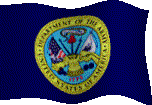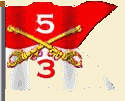Charlie Horse History Forward

15 March 1971
We lost CWO Steve Peck. That was a hard blow, harder than most to some of us. Steve was one of the few remaining seasoned Scouts. On that fateful morning, Charlie Horse Operations received visual intelligence from the adjoining Air Force OV-10 Forward Air Controller (FAC) pilot, CPT Roberts, callsign “Barky.” He had spotted multiple 51’s and a 37mm antiaircraft gun generally located in the vicinity of Co Roc. He had a stack of USAF F-4 Phantom fight-bombers holding at altitude, but he required a more precise target location before clearing the F-4s for their attack. The Charlie Horse recon team was already airborne and working with Steve as the Scout. A drawback existed in the plan - Steve was in the left seat in the process of checking out a new scout pilot. He was not in the right seat, the customary seat for the AC and the preferred visual recon seat. The mission was urgent given that the F-4’s had only limited orbit time. Steve made the decision to not change seats and in the ensuing recon the OH-58 was hit by a 51 burst, killing him instantly. WO Rossiter, the right seat scout trainee, managed to get the aircraft down with extensive battle damage. The Huey chase aircraft evacuated Steve to Bravo Med at Khe Sanh but there was nothing to be done for him. Further indignity occurred when the Blues securing the downed OH-58 were subjected to an inadvertent bomb run by one of the F-4’s. It was later referred to as a “communications mistake.” The hard bombs passed right through the orbiting Gun Team that was providing gun cover for the Infantry. They all were lucky to escape with only concussion injuries and were evacuated by the “Bagger” Huey. The OH-58 was destroyed on site at grid XD694405.
There is more to the “story” of Steve Peck. He was a graduate of the Monterey Language School. He actually knew the North Vietnamese dialect. He communicated with the Troop’s Vietnamese hooch maids and was very popular with them. Through Steve, we were able to get a true feel of how these poor women existed in the war zone and came to realize the losses of their family members in the decades long war had affected their lives. There was a great deal of weeping when his death was announced to them.
There were numerous times on a Recon before LS 719 started that the NVA would jam our FM with chatter. All of us in the Troop were known to the NVA as on our shirts and jackets were our call signs, names and rank. They’d call us by name and tell that we would be killed - the usual stuff that the enemy chattered when possible. Steve would have conversations, while brief, in Vietnamese with them. After one such exchange the lead gun asked him, “What was that conversation about?” Steve told him, “They want us to come up the valley to our right, so they can shoot us.” Well, that is exactly the direction the Team went. The results were not favorable to the NVA. Seems like Steve’s talents could have been employed someplace other than in a Cav OH-58 on the DMZ.
While the action continued in Laos, the growing concern on the South Vietnam side of the border was mounting evidence that the NVA were planning an advance from the border or the DMZ directly north of Khe Sanh. The 3/5 Cavalry blocking force were experiencing increased ground contact. Large NVA body counts and increased US loses made the extreme Tri-Border area the high priority mission daily. The fresh enemy soldiers were well supplied as was evident by their backpacks containing canned goods. New uniforms and plenty of anti-aircraft weaponry were common capture items. The hundreds of 122mm rockets sent into Khe Sanh or discovered and destroyed by the Troop indicated future trouble. One of the factors that gave concern to the command was the lack of backup for the Troop in the event our ground element, limited as it was to about a total of 20+, became engaged with a vastly superior force while recovering downed crews. That concern was realized on 24 March.
24 Mar 1971
Another bad day in the Tri-Border area. A Hunter Killer Team with the veteran Scout CWO Jim Ross was doing recon north of the 3/5 Cav laager sites when an RPG struck his tail boom. Even at the increased speed the Scouts were operating at to evade just that situation, the OH-58A #69-18136 rolled over and went down into the trees on a hillside at grid XD668543. There was no view of the crash site and there was no radio communication. Under Cobra Gun cover, CWO Jerry Lay maneuvered his Huey low level using the hillside as defilade from one of the 51 Cal sites thus getting as close to the downed 58 as possible. Chopping brush, Lay brought the Huey down and the Infantry jumped out under fire. Exiting the improvised LZ the aircraft received numerous hits from machine gun fire, but it held together long enough to clear the area then Jerry made a forced landing.
With the proximity of Khe Sanh, Charlie Horse aircraft were headed rapidly to the site of the shoot-downs. Arriving in the ones and twos, they were fed into the increasing disaster. Fast response had always been the option best suited for crew recovery before the enemy could organize and marshal enough force to exploit the situation. Arriving piecemeal, not an optimum plan in this situation, found events unfolding in fast order. The Cobra team covering Ross were quickly engaging the 51’s. The Cobra Lead, CPT Jimmy Jackson had his gunsight removed when a 51 Cal round passed through the cockpit. Another round disabled his weapons systems electronics. Jackson and the other Cobra flown by CPT Paul Carter continued to suppress the enemy fire. Jackson with his canopy open was shooting his 45. CWO Randy Fisher arrived with a Huey. He recovered Lay and his crew. With 13 Americans on that Huey, he had his hands full.
The scramble out of the laager at Khe Sanh was a race to the site of the shoot-downs. CPT Dave Coker, Scout Platoon Leader, was ahead of the remainder of his team. As he descended to gain visual contact with the multiple crews on the ground, he was engaged by multiple 51’s. At about 200 feet the LOH #68-16955 nosed over, crashed and caught fire immediately at grid XD665536. The CE PFC Robert D. Walters and SGT Curtis D. Bauer the OB died in this LOH. There was little likelihood that anyone survived that crash, so the focus of the limited assets was directed toward the Ross crash site and the Infantry on the ground. CWO Jeff Bavar, was next to arrive with his Huey and his 5-man squad of Blues. Following Lay’s plan to use the hills for cover, Jeff got as near as possible. At about 20 feet AGL and chopping wood, Jeff decided to move to a better location when two of the Blues exited the Huey. Bavar had no idea they had jumped! Struggling with the aircraft, he got out of the beaten zone with his damaged Huey. CWO Russ Whipple arrived with a fully armed Cobra to relieve Jackson. Seeing the predicament the two Blues were in and realizing they had no radio or any idea where the other squad was, he took his Cobra down into the bush and with hand signals and directions got them moving toward the five men from the Ross insertion. All this happened in short order. It was clear that the ground assets available to the Troop would not be enough and there was a possibility they all could be lost feeding them in one aircraft at a time. The Troop by this time didn’t have adequate aircraft or personnel to address the situation.
Meanwhile, Jim Ross found himself the only survivor of the initial shoot down. His CE, SP4 E. William Neal, and OB, SGT Harry M. Beckwith, were both KIA from RPG blast or the crash of #6916136 at grid XD668543. Despite a severely broken ankle, a crushed hand and a deep facial cut, he managed to extract himself from the wreckage of the LOH and ascend the hill linking up with the searching Blues. From that position they exchanged hand grenades with the NVA in close vicinity.

.gif)


